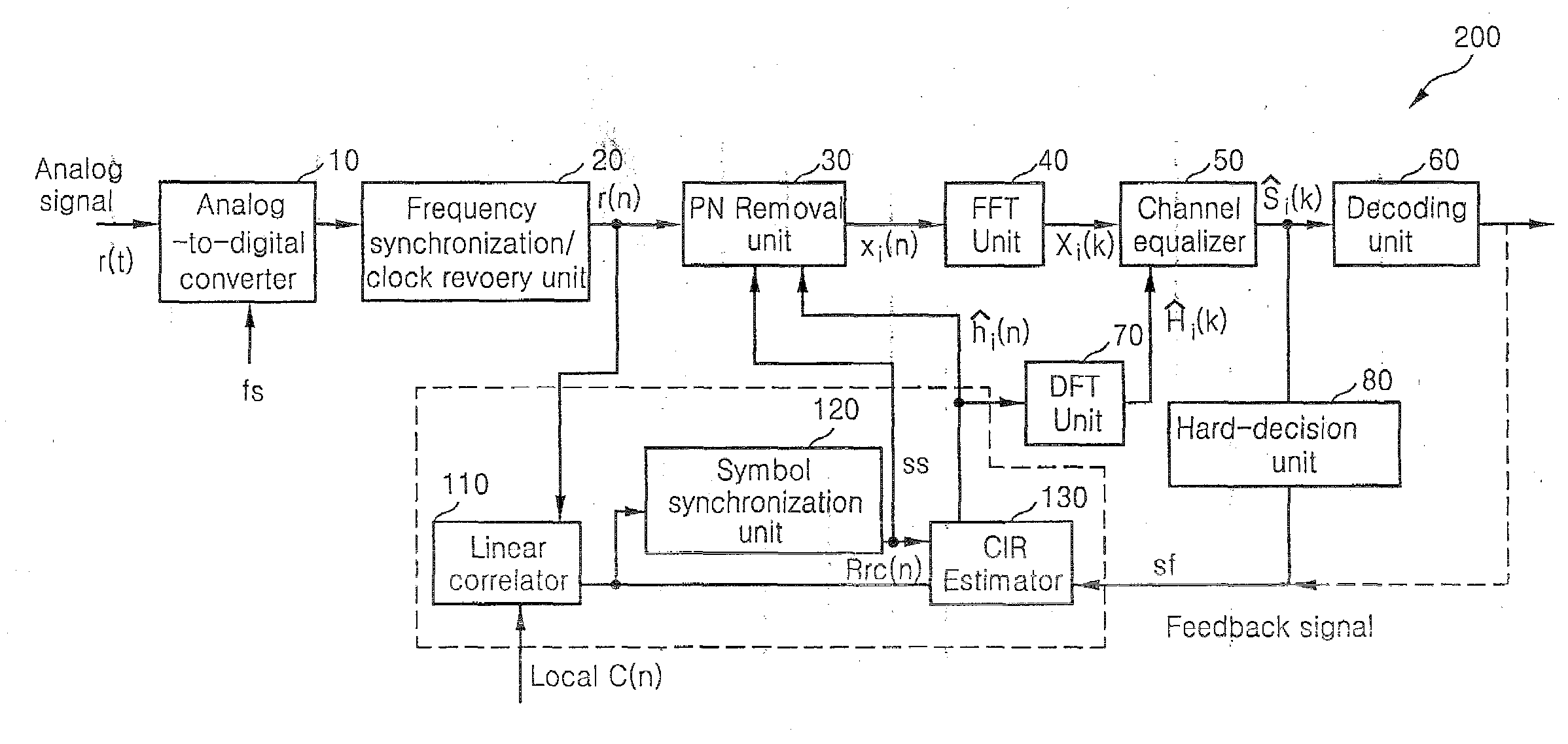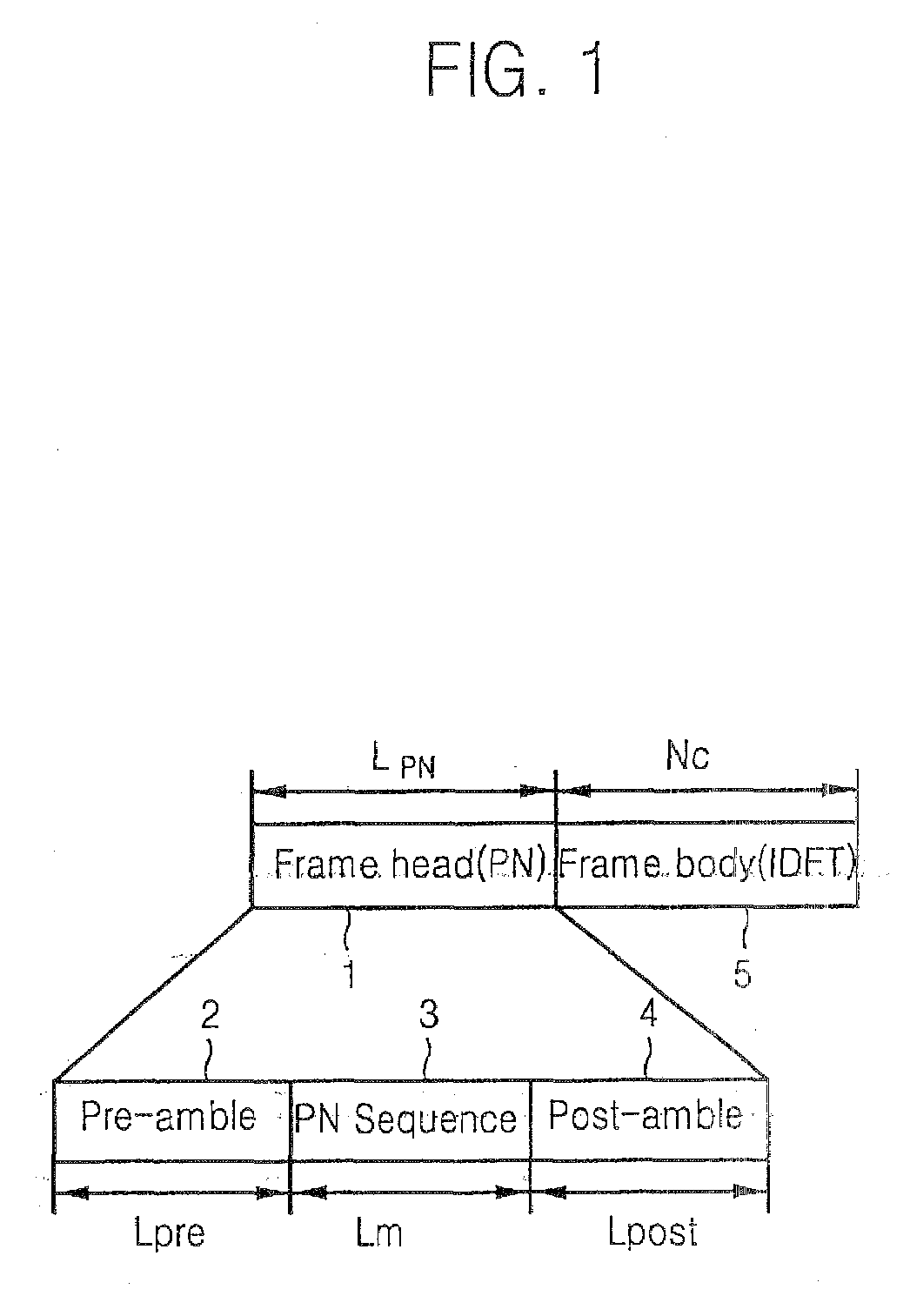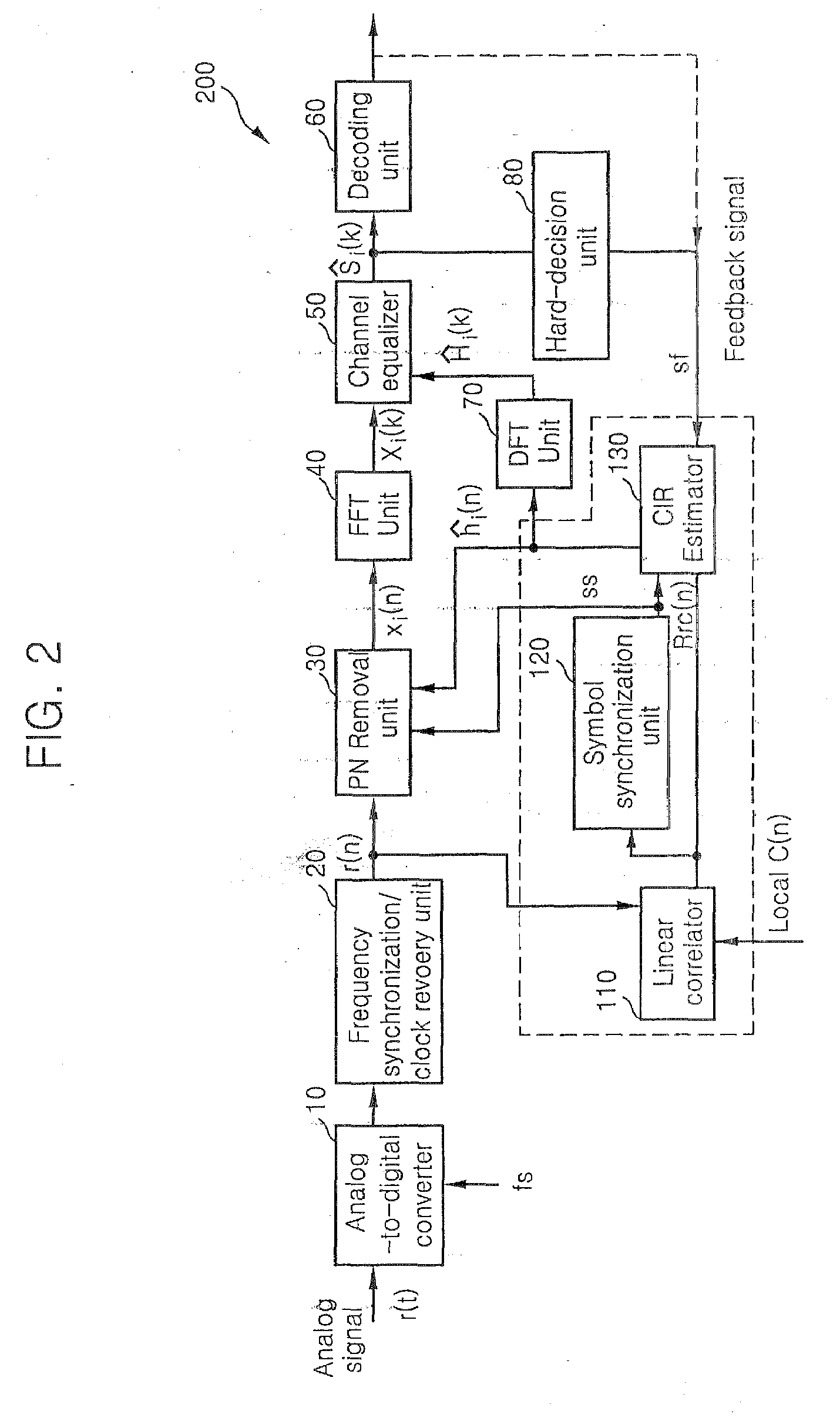Channel estimation method and system using linear correlation based interference cancellation (LCIC) combined with decision-feedback-equalization (DFE)
a channel estimation and decision-feedback equalization technology, applied in the field of channel estimation methods and systems, can solve the problems of high bit error rate (ber) at the receiver, complicated implementation of equalizers in the receiver, and hinder the receiver from restoring the signal normally, so as to achieve the effect of reducing computation complexity, reducing interference, and accurately canceling interferen
- Summary
- Abstract
- Description
- Claims
- Application Information
AI Technical Summary
Benefits of technology
Problems solved by technology
Method used
Image
Examples
Embodiment Construction
[0045]FIG. 1 illustrates the structure of an Orthogonal Frequency Division Multiplexing (OFDM) transmitted signal according to an embodiment of the present invention. The OFDM transmitted signal includes a frame head 1 including pseudo-noise (PN) and a frame body 5 corresponding to Inverse Discrete Fourier Transformed (IDFT) data block.
[0046]The frame head 1 includes a pre-amble 2, a PN sequence 3, and a post-amble 4. Reference characters LPN, Ipre, Lm, and Lpost respectively denote the length of the frame head 1, the length of the pre-amble 2, the length of the PN sequence 3, and the length of the post-amble 4. The PN sequence 3 is generated based on an m-sequence method, i.e., a maximal length sequence method The pre-amble 2 and the post-amble 4 are generated by the cyclical extension of the PN sequence 3. For example, when LPN=255, Lpre=83, and Lpost=82, the pre-amble 2 corresponds to 173rd through 255th signals in the PN sequence 3 and the post-amble 4 corresponds to first throu...
PUM
 Login to View More
Login to View More Abstract
Description
Claims
Application Information
 Login to View More
Login to View More - R&D
- Intellectual Property
- Life Sciences
- Materials
- Tech Scout
- Unparalleled Data Quality
- Higher Quality Content
- 60% Fewer Hallucinations
Browse by: Latest US Patents, China's latest patents, Technical Efficacy Thesaurus, Application Domain, Technology Topic, Popular Technical Reports.
© 2025 PatSnap. All rights reserved.Legal|Privacy policy|Modern Slavery Act Transparency Statement|Sitemap|About US| Contact US: help@patsnap.com



